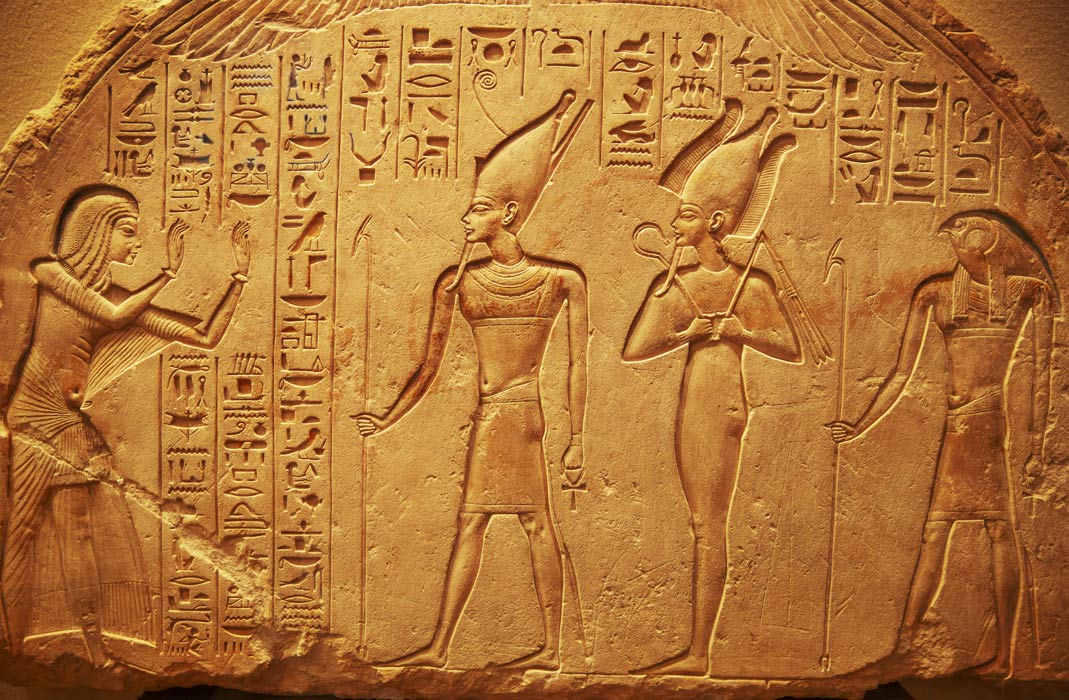The Ancient Near Eastern Languages in Contact eLecture Series ends this week with a presentation on Eblaite by Dr. Rebecca Hasselbach-Andee, Associate Professor of Comparative Semitics at the University of Chicago. Dr. Hasselbach-Andee’s work includes a broad range of Semitic languages, and she has edited a volume recently published, called A Companion to Ancient Near Eastern Languages.
Archaeological excavations continue to discover written material that delivers both context and questions to the field of ancient Near Eastern language study. For example, Eblaite is a language discovered in the mid-1970s in Northern Syria at Tell Mardikh. The cache of writings included around four thousand texts across a 50-year span. Among the writings, they found administrative texts, Chancellery texts, incantations, and lexical lists that feature Sumerian.
The Eblaite 3rd Millennium texts coincided with the Pre-Sargonic and Sargonic periods of Akkadian. Therefore, Ebla may have been an integral part of an involved trade system stretching from Egypt through Ebla and into Mesopotamia. Cultural contact is evidenced by a borrowed writing system and linguistic influences not native to Ebla. Due to this mixture of linguistic evidence, Dr. Hasselbach-Andee began her research by asking the question, “Where does Eblaite fit in the language family?”
Soon after the discovery of Eblaite, scholars set out to classify the language, starting with the regional assignment of “Old Canaanite.” However, it was not long before scholars realized East Semitic writing systems heavily informed the language, which drove predominant theories by the mid-90s. The challenge of classifying Eblaite is in the significant number of mixed characteristics. This is where Dr. Hasselbach-Andee’s study comes to bear.
While most scholars agreed that Eblaite was an East Semitic language, the sub-group classification remains a challenge. Some scholars support Eblaite as an independent East Semitic language, and others believe it is a dialect of Akkadian. Dr. Hasselbach-Andee argued that neither explanation is sufficient and presented evidence to support her appeal for further investigation.
Linguistic evidence suggests that Eblaite follows several East Semitic language styles, including verbal adjective declension and infinitive forms. However, there are many divergences. Dr. Hasselbach-Andee shared examples of unique linguistic features in Eblaite, including pronouns, possessive suffixes, and forms of the imperative. She also demonstrated some innovative features unique to Eblaite; in particular, she focused on the unique declension of T-stem verbs, where the t occurs in both prefixed and infixed positions.
Given the number of borrowed features and the number of divergent features, Dr. Hasselbach-Andee concluded that there is not enough evidence to situate Eblaite in classification clearly. Furthermore, she asserted there is not sufficient evidence to separate Eblaite as a language from Akkadian. Her presentation questions the acceptance of Eblaite as a distinct uniform language.
In response, Dr. Hasselbach-Andee proposed a tentative solution for consideration. After addressing the numerous examples of how Eblaite falls in and out of line with the East Semitic language structure, she concluded that the language developed out of Eastern influences. Although, Ebla adopted its writing system from Mesopotamia, clearly demonstrating evidence of direct contact with the Sumerian language.
There is some shared culture demonstrated in the content of Eblaite writings. For instance, denizens used the Northern Mesopotamian calendar in Ebla. There is also evidence of a local calendar. Scribes apparently came from Mesopotamia, and teachers as well. Given Ebla and Mesopotamia’s cultural and economic ties during the late 3rd Millennium BCE, Ebla likely developed their writing system with direct and indirect influence from the East.
Ebla was influenced by Sumerian as well as the languages in closer regional contact, like Northern Babylonia. Thus, while many scholars hold to Ebla as a distinct uniform language, Dr. Hasselbach-Andee concluded that Eblaite is an Akkadian language with substrate influence from regional languages.
Scholars may find the significance of this study in the amazing way that linguistic forms take shape. The more we know about the evolution of languages in the ancient Near East, the more informed we become in etymology and translative properties for textual interpretation. In addition, Eblaite formed as a sub-group of Akkadian tells us a lot about the flow of economic and educational culture in the 3rd Millennium. Finally, Dr. Hasselbach-Andee’s detailed work provides insight into the progression of language and its ability to transform in the hands and mouths of humans.
About this event
ANELC is a joint King’s College London–UCL series. This is the first year it is running as an online eLecture series. Read about #ANELC presentations. Also, read about other academic conferences.

Dr. Erica Mongé-Greer, holding a PhD in Divinity from the University of Aberdeen, is a distinguished researcher and educator specializing in Biblical Ethics, Mythopoeia, and Resistance Theory. Her work focuses on justice in ancient religious texts, notably reinterpreting Psalm 82’s ethics in the Hebrew Bible, with her findings currently under peer review.
In addition to her academic research, Dr. Mongé-Greer is an experienced University instructor, having taught various biblical studies courses. Her teaching philosophy integrates theoretical discussions with practical insights, promoting an inclusive and dynamic learning environment.
Her ongoing projects include a book on religious themes in the series Battlestar Galactica and further research in biblical ethics, showcasing her dedication to interdisciplinary studies that blend religion with contemporary issues.




